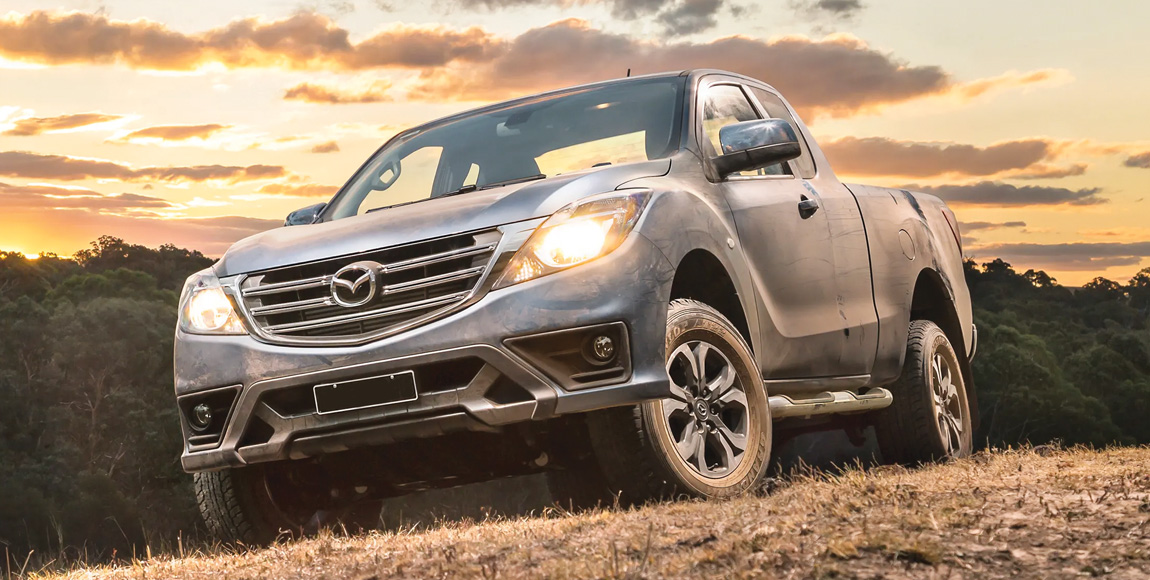Mazda eschews the workhorse

In terms of Mazda’s new global strategy, the brand is committed to delivering premium-quality vehicles aimed at moving the needle for brand value. Among new products scheduled is a replacement for the BT-50 bakkie – which won’t include a workhorse
Mazda’s new-generation BT-50 bakkie – developed in collaboration with Japanese rival Isuzu – won’t include a workhorse version for the South African market, though a cab-and-a-half derivative is on the cards.
In an interview in Johannesburg at the launch of the brand’s new-generation Mazda3 passenger car, Craig Roberts, managing director of Mazda South Africa, said sales of the upcoming BT-50 – which is scheduled for launch in 2021 – would be aimed primarily at the leisure sector of the light commercial vehicle market and would be limited to double cabs and, probably, a cab-and-a-half variant.
“We aim to align the vehicle to the private buyer, who, in the main, represents the leisure user rather than the commercial fleet operator. That’s where we think the consumer trend is heading. And, since we regard the bakkie as being representative of a true crossover vehicle, the new model will incorporate premium-quality features that, in our view, will make it a forceful competitor to SUVs,” he said.
Roberts added that, in terms of global strategy, Mazda was repositioning all of its products as “more premium” than they had previously been perceived. He said the new Mazda3, for instance – which represented the seventh generation of the model – had moved upmarket and, through his eyes, the vehicle now rivalled an Audi A3 rather than a Volkswagen Golf in terms of styling, features, equipment and quality.
Similarly, he believed the new BT-50 would sport a cabin comparable to that of the current Mazda CX-5, with exterior styling – solely developed by the company’s design team – taking on a robust, truck-like look. “I’ve seen the styling designs for the new vehicle,” he said, “and the overall look is far more muscular than that of the model it will supersede. I think it’s right for South Africa’s market.”
Roberts described Mazda’s current BT-50 – which was co-developed with Ford about eight years ago – as “a little too soft and passenger car-like” in terms of the bakkie market’s consumer appeal. “It is largely perceived to be a Ranger with a different badge. In this respect, I believe the new model will open up exciting opportunities for us. Even though it has been developed in conjunction with Isuzu, it will have its own identity, its own DNA – and that will be an important differentiator in the consumer market.
“It’s been four-and-a-half years since Mazda became a standalone company in South Africa, and only now are we getting to the point where we’re being seen to be independent of our former custodians. I believe the next-generation BT-50 – along with other new models in the Mazda line-up – will help us to further challenge the way the brand is distinguished,” he said.
Roberts added that although the launch of the vehicle remained a long way off – it is likely to be unveiled locally only in the second quarter of 2021 – the model is seen as imperative from a brand perspective. “In terms of sales, South Africa represents only fractionally over one percent of Mazda’s annual global volume – yet our performance here is regarded as important to the company’s overall success.
“From a local perspective, our share of the market is equally vital. We’re in business to generate a profit, and we have to ensure a realistic line-up of vehicles that is going to help us to achieve that aim. In terms of our ‘more-premium’ strategy, we are committed to delivering quality products that will move the needle for brand value.”
Published by
Focus on Transport
focusmagsa




